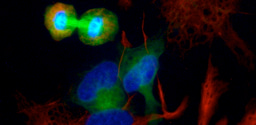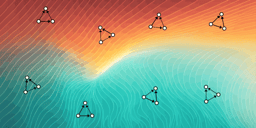Sensitivity of the hardest magnetic phases to the relative B content
Published in Physics

As is well known, Nd-Fe-B and Sm-Co-based alloys are the most widely used rare earth permanent magnetic materials. High room-temperature coercivity is necessary for excellent high-temperature permanent magnetic properties. At 4.2 K, the anisotropic field of the hexagonal SmCo4B phase is 1200 kOe, which is much larger than the 710 kOe of the SmCo5 phase, making it the hardest known hard magnetic phase. Just as B changes the magnetism of Nd-Fe-B, B also seriously affects the phase structure and magnetic properties of Sm-Co-B. Sm-Co-B can form various phase structures, such as Sm3Co13B2, SmCo4B,Sm5Co19B6, Sm3Co11B4, Sm2Co7B3, SmCo3B2, Sm2Co14B,SmCo12B6, SmCo4B4, SmCo2B2, Sm3Co20B, SmCo18B6, Sm11Co40B40, Sm2Co5B2, Sm4Co3B6, etc. Among them, SmCo4B (1:4:1), Sm5Co19B6 (1:3.8:1.2), and Sm3Co11B4 (1:3.7:1.3) have the same P6/mmm space group and similar crystal structures. Therefore, small compositional differences in Sm: Co: B may form different crystal structures, leading to the Sm-Co-B system's complexity.
Based on many magnetic peers, Professor Jibing Sun's team has conducted a long-term exploration of the Sm-Co-B system (https://doi.org/10.1038/s41467-024-54610-6; https://doi.org/10.1007/s00339-024-08123-0; https://doi.org/10.1016/j.matlet.2024.136124; https://doi.org/10.1016/j.jallcom.2023.170266; https://doi.org/10.1016/j.jallcom.2023.169107; https://doi.org/10.1016/j.jallcom.2022.163687; https://doi.org/10.1016/j.jnoncrysol.2021.120751; https://doi.org/10.1063/1.5099331; https://doi.org/10.1016/j.jmmm.2018.06.049; https://doi.org/10.1016/j.physb.2018.09.010; https://doi.org/10.1016/j.physb.2018.06.015), they revealed the effects of chemical composition, quenching speed, annealing temperature and time on Sm-Co-B.
This paper investigates the effect of B content on the phase transition, microstructure evolution, and magnetic properties of SmCo2.94FeCu0.06Bx (x = 0.8, 1.0, 1.2) ribbons. The results show that B addition changes the as-spun ribbons' amorphous forming ability and the annealed ribbons' phase composition. The amorphous phase content of the ribbons with x=0.8, 1.0, and 1.2 is 42.52 vol.%, 35.34 vol.%, and 60.64 vol.%, respectively. The high amorphous content results in poor hard magnetic properties of the as-spun ribbons. After annealing at 800 °C for 30 minutes, the amorphous phase in the as-spun ribbons crystallized. The x=0.8 ribbons consisted of 54.2 wt.% 1:4:1, 28.9 wt.% 2:7:3, and 16.9 wt.% 2:14:1 phase. The the x=1.0 ribbons are composed of 57.1 wt.% 1:4:1, 36.1 wt.% 5:19:6, and 6.8 wt.% 2:7:3 phases, while the x=1.2 ribbons are composed of 37.2 wt.% 1:4:1, 54.3 wt.% 3:11:4 wt.%, and 8.5 wt.% 2:7:3 phases.
The microstructural analysis demonstrates that the x = 0.8 and x = 1.2 annealed ribbons are mainly composed of equiaxed grains, while the x = 1.0 annealed ribbons are composed of platelet-shaped grains. Only the x = 1.0 annealed ribbons composed of platelet-shaped grains with a composition ratio closest to the SmCo4B achieve a high coercivity. In contrast, the annealed ribbons with low or high B content exhibit poor hard magnetic properties. Micromagnetic simulation confirms that the initial magnetization of SmCo2.94FeCu0.06Bx (x=0-1.2) ribbons is a multi-phase and multi-stage stepwise magnetization process. The demagnetization process also exhibits multi-step reversal behavior. In addition, the B content significantly affects the nucleation field of the Sm-Co-B phases.
Follow the Topic
-
Applied Physics A

This journal was founded in 1973 and is one of the leading international, peer-reviewed journals featuring original experimental and theoretical results in applied physics and material science.



Please sign in or register for FREE
If you are a registered user on Research Communities by Springer Nature, please sign in